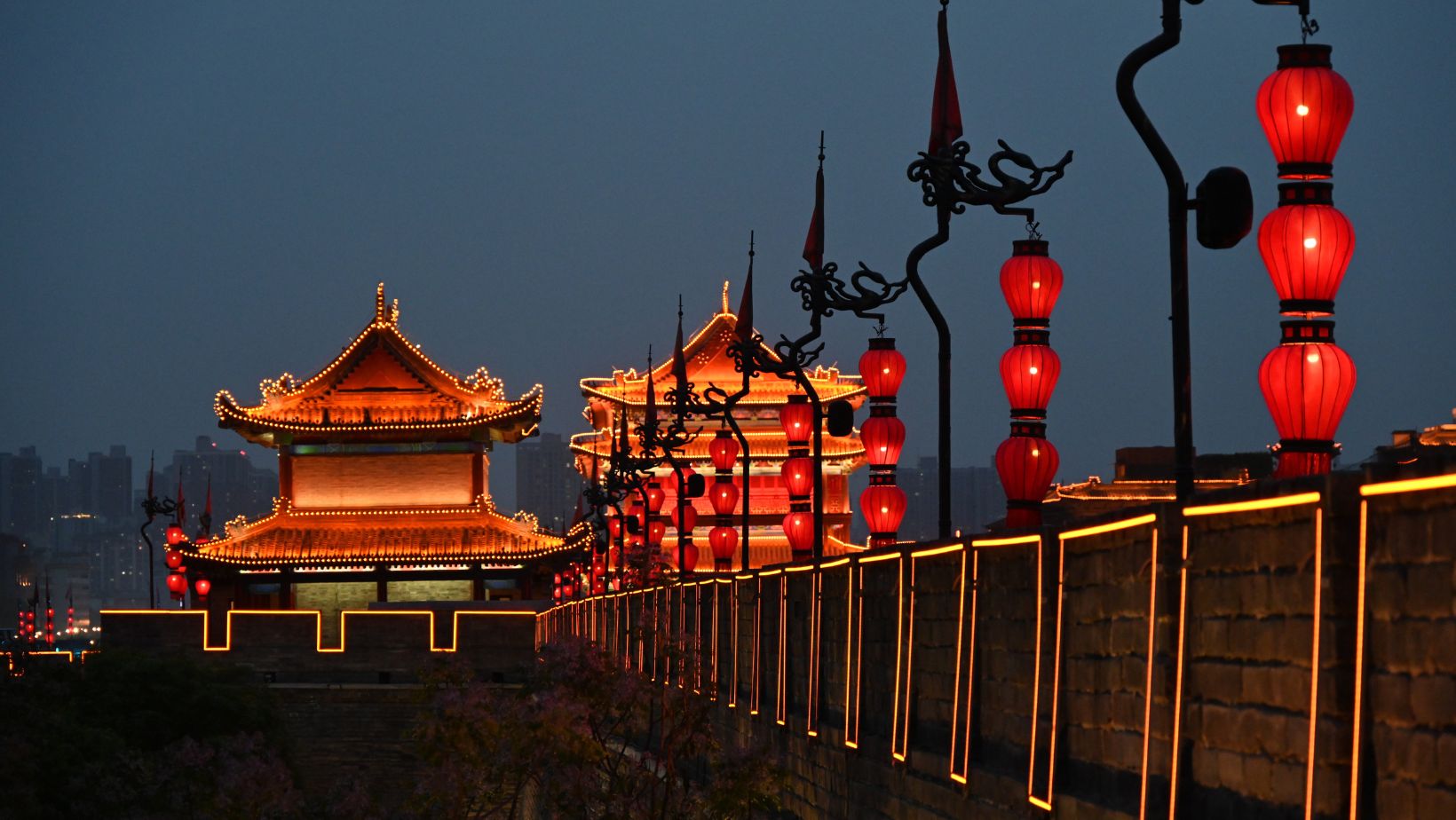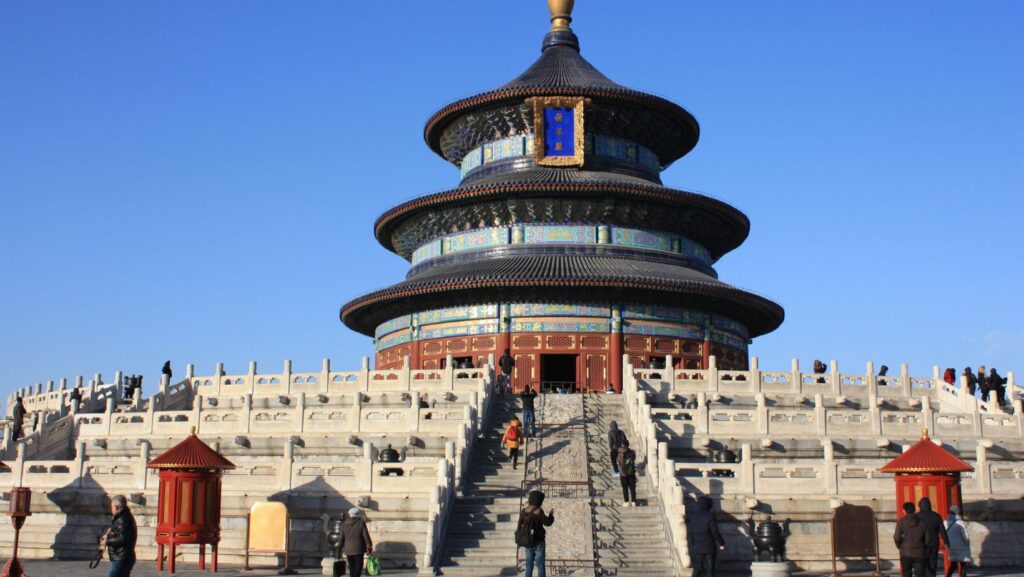
Driven by its China Focus blueprint, Beijing now places innovation and diplomacy at the core of national strategy, coupling record AI investment and state-backed R&D incentives with an assertive presence in global forums such as the China Development Forum and the annual Two Sessions. This emphasis aims to convert breakthroughs in artificial intelligence, green technology, and advanced manufacturing into engines of sustained, high-quality growth that stabilise both domestic and international markets.
Equally, China Focus guides Beijing’s expansive diplomacy—from the Belt and Road Initiative to emerging multilateral platforms—allowing China to fill vacuums in global governance and extend its influence across Africa, Southeast Asia, and Latin America. By fusing technology leadership with cooperative outreach, the strategy aims to play an inclusive, rules-shaping role for China in the evolving world order while securing pathways for shared development.
A Five-Percent Roadmap
During his annual work report to the National People’s Congress on 5 March, Premier Li Qiang set a 2025 growth target of “around five percent”—the same pace recorded in 2024, when gross domestic product expanded to 130 trillion yuan (US$18.8 trillion). While many developed economies struggle to sustain momentum, China accounted for roughly 30 percent of global growth last year, according to the Ministry of Commerce.
To keep that engine humming, Beijing has approved an aggressive fiscal blueprint. The Ministry of Finance will raise the deficit-to-GDP ratio to four percent and float 4.4 trillion yuan in special bonds earmarked for innovation projects. An additional 1.3 trillion yuan in ultra-long-term treasury bonds will help fund “strategic programs”—a term officials use to describe advanced manufacturing, climate technology, and critical infrastructure.
Li framed the spending as a necessary down-payment on the country’s “new productive forces,” a slogan coined by Party leaders to describe high-tech sectors that can offset slowing property and low-end manufacturing. “We must seize the commanding heights of future industry,” he told delegates.
The Tech Cluster Effect
Evidence of that shift is already visible on factory floors. Output from China’s high-tech manufacturing sector grew 8.9 percent last year, outpacing overall industrial production. Equipment manufacturing rose 7.7 percent, while new-energy-vehicle (NEV) production topped 12.8 million units, cementing China’s status as the world’s largest EV maker.
Foreign investment is following. The World Intellectual Property Organization (WIPO) ranked China 11th in its 2024 Global Innovation Index and listed 26 Chinese metropolitan areas among the world’s top 100 technology clusters—more than any other country. Domestic high-tech investment climbed 10.6 percent year-on-year in the first half of 2024, according to the National Bureau of Statistics.
“China has created a complete ecosystem, from basic research to commercial deployment,” said Zhang Li, a research fellow at the China Institute for Innovation and Development Strategy. “It enables rapid scaling that few economies can match.”
Digital Silk Roads
Beijing’s Belt and Road Initiative (BRI) has evolved beyond ports and railways into a network of “digital silk roads” that export Chinese standards in 5G, cloud computing, and e-commerce. More than 150 countries have signed BRI cooperation documents since 2013. While critics warn of debt risks, supporters argue the projects narrow the digital divide and accelerate green development.
Chinese companies, such as Huawei, Alibaba Cloud, and CATL, feature prominently. In Africa, a Huawei-built fiber backbone. “The narrative that BRI is only about bricks and mortar is outdated,” said Li Ming, vice-president of the Export-Import Bank of China. “We are entering a phase where data cables and charging stations are equally strategic.”
Diplomatic Offensive
If innovation supplies the hardware of national rejuvenation, diplomacy provides the software. Over the past 18 months, President Xi Jinping has hosted three major gatherings in Beijing: the China-Arab States Cooperation Forum, the Forum on China-Africa Cooperation, and July’s Global Civilizations Dialogue Ministerial Meeting, where ministers from 50 countries endorsed a communiqué calling for “equitable and inclusive modernization.”
China has also sharpened its voice at the United Nations. In March, the country co-sponsored the first Security Council resolution demanding a humanitarian ceasefire in Gaza; in July, it championed cyber development, urging states to “build a community with a shared future in cyberspace.”
Membership in Chinese-led groupings continues to rise. By December 2024, 82 countries had joined the Group of Friends of the Global Development Initiative (GDI), a program that funds poverty reduction and infrastructure projects in the Global South. Meanwhile, more than 100 nations expressed support for the Global Security Initiative (GSI), China’s vision for “common, comprehensive and cooperative” security, which rejects Cold War alliances.
Regional Footprints
Closer to home, Beijing is knitting together supply chains through the Regional Comprehensive Economic Partnership (RCEP), a 15-member free-trade bloc that now covers one-third of global GDP. Chinese customs data indicate that trade with RCEP partners is expected to grow in 2024.
Beijing is also courting its immediate neighbors through joint infrastructure projects. A China-Laos railway extension toward Thailand broke ground in February, with construction slated for later in 2025. Additionally, a Sino-Kazakh logistics hub on the Caspian Sea welcomed its first cargo in June 2025. “Our approach is win-win,” Vice-Foreign Minister Ma Zhaoxu told reporters. “China gains market access, and partners receive modern connectivity.”
Domestic Drivers
Analysts caution that China’s external ambitions depend on domestic reforms. The State Council has pledged to spur household spending, streamline local government debt, and liberalize market entry for foreign firms. Measures include pilot free-trade zones in seven provinces and regulations allowing wholly foreign-owned investment banks.
“Without deeper reforms, growth could plateau,” said Alicia García-Herrero, chief Asia-Pacific economist at Natixis. “But the government appears committed to balancing innovation with macroeconomic stability, which is crucial for maintaining credibility abroad.”

Challenges Ahead
Geopolitical headwinds persist. The United States and European Union are weighing fresh tariffs on Chinese EVs and solar panels, citing overcapacity and subsidies. Washington has tightened export controls on advanced semiconductors, while the European Union launched an anti-subsidy investigation into Chinese wind turbine imports on April 9, 2024.
China Global Television Network (CGTN) reported that Beijing has responded by accelerating indigenous chip research and launching multiple funds with 1 trillion yuan. The Ministry of Commerce described the EU inquiry as “protectionism” and warned of countermeasures. “China will defend its legitimate interests,” spokesperson He Yadong said at a 10 July briefing.
Long-Term Outlook
Despite friction, multilateral agencies expect China to remain a pillar of global expansion. The International Monetary Fund forecasts 4.6 percent growth for 2025-26, accounting for one-quarter of the worldwide output gains. The Asian Development Bank projects that by 2030, green-tech exports could triple to US$1.2 trillion annually if current trends hold.
“China’s success is not predetermined, but innovation and diplomacy give it considerable leverage,” said Wang Huiyao, founder of the Center for China and Globalization. “How effectively Beijing aligns these two drivers will shape everything from climate targets to peace negotiations.”
That alignment is already influencing global conversations. When ministers gathered in Beijing this month for the Global Civilizations Dialogue, renewable-energy financing shared the agenda with cross-cultural education. Delegates agreed to establish an “AI ethics council” headquartered in Shenzhen and pledged to double student exchanges by 2030.
Future Scenarios
What does China’s dual-track strategy mean for the rest of the world? Economists highlight potential scenarios:
- Supply-chain reshuffling could see Southeast Asia and Latin America integrate deeper into Chinese networks, diversifying away from legacy hubs.
- Yuan-denominated trade settlements may erode the U.S. dollar’s dominance in certain commodity markets, particularly if Beijing liberalizes its capital account.
- Joint innovation centers, such as the China-Europe AI Laboratory inaugurated in Munich last November, could create new standards in quantum computing and biopharmaceuticals.
However, diplomatic missteps or domestic slowdowns could hamper progress. “China’s international posture is inseparable from its economic narrative,” said Trivium China analyst Helen Qiao. “If household consumption falters or geopolitical tensions escalate, partnerships may wither.”
Conclusion
For now, China Focus remains both a slogan and a strategy, encapsulating a model in which laboratory breakthroughs and summit diplomacy mutually reinforce each other in a self-reinforcing loop. The government’s willingness to spend heavily on frontier sectors, coupled with its drive to craft alternative forums for global governance, signals that Beijing intends to set—not just follow—the agenda in the decades ahead.
As 2025 unfolds, the world will watch whether the twin engines of innovation and diplomacy keep China’s ascent on course, or whether external turbulence and internal restructuring force a recalibration. Either way, the implications will be felt far beyond the country’s borders, in boardrooms, parliaments, and research parks from Nairobi to New York.







